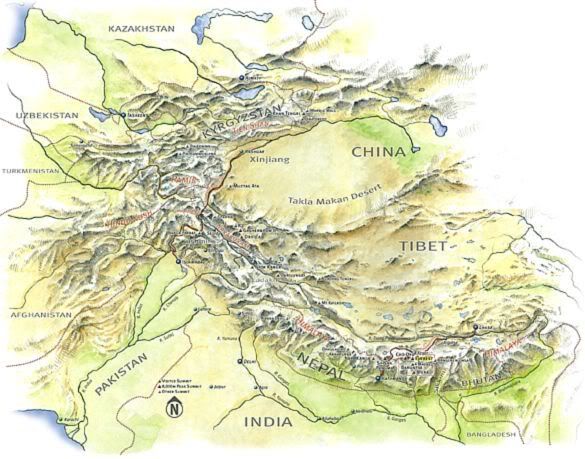
Joanne! :-)
Blogging for the American Himalayan Foundation in Blogathon 2007!
 again to my generous sponsors, to my wonderful monitor Bella, to my supportive family (2-legged and 4-leggeds), to the AHF, and to Blogathon. You all helped make my Blogathon experience both successful and fun!
again to my generous sponsors, to my wonderful monitor Bella, to my supportive family (2-legged and 4-leggeds), to the AHF, and to Blogathon. You all helped make my Blogathon experience both successful and fun!  Well, I may not have gotten around to posting about Mt. Everest last night, but I sure do feel like I climbed it! But you all made it a lot of fun, and I thank you for keeping me entertained with your posts and comments, and for sponsoring me! You all did a great job, and I'm proud to know ya! :-)
Well, I may not have gotten around to posting about Mt. Everest last night, but I sure do feel like I climbed it! But you all made it a lot of fun, and I thank you for keeping me entertained with your posts and comments, and for sponsoring me! You all did a great job, and I'm proud to know ya! :-) Damn, too late. But please Sponsor Me anyway! Ya big booby! ;-)~
Damn, too late. But please Sponsor Me anyway! Ya big booby! ;-)~
 From the AHF web site:
From the AHF web site:Nine years ago, AHF started a race against time. In the fabled kingdom of Lo, called Mustang in the west, spectacular gompas built in the fifteenth century were on the verge of collapse. Earthquakes, weather and time had taken their toll on these Tibetan Buddhist cathedrals; portions of the roofs were sagging, soot and dust obscured the sacred images, and sections of some of the 20-foot paintings were hanging like curtains, literally detaching from the walls.
The daunting mission: to restore them. Without careful intervention, these rare treasures would be lost forever.
Restoration architect John Sanday, always up for a challenge, led the AHF team of carpenters and wall-painting conservators. Together, season by season, the team painstakingly restored the structures and the astonishingly beautiful wall paintings. As they went, they trained a local Loba team in the art and science of conservation: replacing roofs, fixing twisted structures and meticulously removing centuries of black grime from the paintings.
Thubchen Gompa, Champa Gompa, Lo Gekar, Tsarang Gompa and two giant chortens have all been rescued. As work draws to a close, the results are stunning. And, as important, the Loba community has new connection to their heritage and 100 new local artisans have the skills they need to save other treasures.

(Both photos copyright American Himalayan Foundation, used with permission)A carefully restored mandala painting in Champa, an ancient Tibetan Buddhist monastery AHF is helping to refurbish
 The creation of a sand mandala usually requires many days to complete. Each mandala contains many symbols that must be perfectly reproduced each time the mandala is created. Shortly after its completion, the monks traditionally gather in a colorful ceremony, chanting as they sweep their mandala into a jar, its destruction a metaphor for the impermanence of life. They then empty the jar into a nearby body of water as a blessing, the waters carrying the healing blessing to the ocean, and from there it spreads throughout the world for planetary healing.
The creation of a sand mandala usually requires many days to complete. Each mandala contains many symbols that must be perfectly reproduced each time the mandala is created. Shortly after its completion, the monks traditionally gather in a colorful ceremony, chanting as they sweep their mandala into a jar, its destruction a metaphor for the impermanence of life. They then empty the jar into a nearby body of water as a blessing, the waters carrying the healing blessing to the ocean, and from there it spreads throughout the world for planetary healing.
 Prayer flags are inscribed with auspicious symbols, invocation, prayers and mantras. Tibetan Buddhists for centuries have planted these flags outside their homes and places of spiritual practice for the wind to carry the beneficent vibrations across the countryside and the world. Prayer flags are said to bring happiness, long life and prosperity to the flag planter and those in the vicinity.
Prayer flags are inscribed with auspicious symbols, invocation, prayers and mantras. Tibetan Buddhists for centuries have planted these flags outside their homes and places of spiritual practice for the wind to carry the beneficent vibrations across the countryside and the world. Prayer flags are said to bring happiness, long life and prosperity to the flag planter and those in the vicinity.Lovingkindness Meditation
May all beings be well.
May all beings be happy.
May all beings be peaceful.
May all beings be relieved of suffering.
 I'm pretty sure those are the right lyrics from "The Sound of Music!" It's been a long time since I watched that movie, plus I think I may be sloughing brain cells at this point! ;-) But if I don't have the lyrics quite right, the sentiment is true. I love mountains, always have. Drop me anywere, and if there's a bump in the landscape, I'll head for it. One of the reasons I've long been fascinated by the Himalaya. I have only been there in my imagination, through videos and books, and a story my friend Iain told me about his visit to Nepal years ago. He'd go on day treks (which sounds really fun to me), and spend the rest of the time in the lobby of his hotel, which he said had a huge floor-to-soaring-ceiling glass wall looking out over the incredible Himalayan peaks. Iain would return from a trek and sit there in that lobby drinking chai and just soaking in that view. Sounds like a pretty decent way to spend a day to me!
I'm pretty sure those are the right lyrics from "The Sound of Music!" It's been a long time since I watched that movie, plus I think I may be sloughing brain cells at this point! ;-) But if I don't have the lyrics quite right, the sentiment is true. I love mountains, always have. Drop me anywere, and if there's a bump in the landscape, I'll head for it. One of the reasons I've long been fascinated by the Himalaya. I have only been there in my imagination, through videos and books, and a story my friend Iain told me about his visit to Nepal years ago. He'd go on day treks (which sounds really fun to me), and spend the rest of the time in the lobby of his hotel, which he said had a huge floor-to-soaring-ceiling glass wall looking out over the incredible Himalayan peaks. Iain would return from a trek and sit there in that lobby drinking chai and just soaking in that view. Sounds like a pretty decent way to spend a day to me!Climb the mountains
and get their good tidings.
Nature's peace will flow into you
as sunshine flows into trees.
The winds will blow their own freshness into you,
and the storms their energy,
while cares will drop off like autumn leaves.
~ John Muir

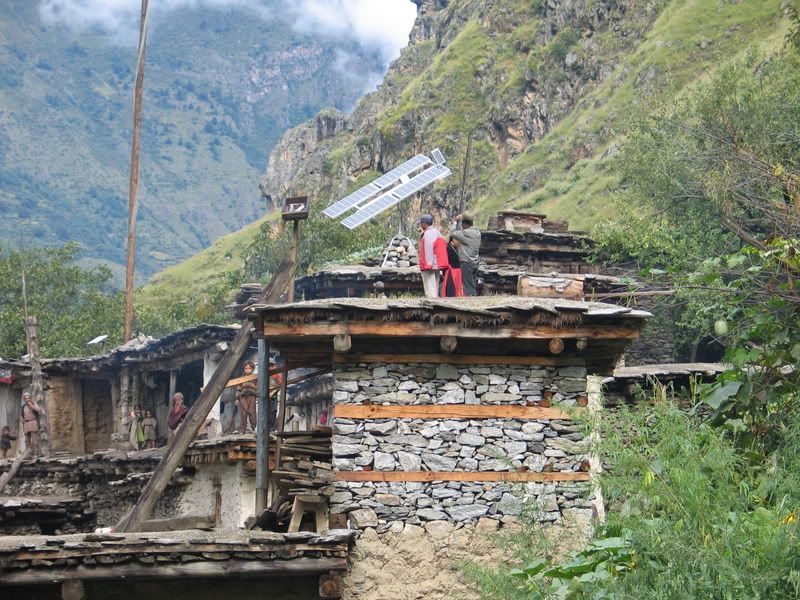
 Equipment that isn’t maintained isn’t useful, so the team started informal education classes. Nearly all of the adults are illiterate, so they hit on the idea of using modified instruction manuals as the syllabus.
Equipment that isn’t maintained isn’t useful, so the team started informal education classes. Nearly all of the adults are illiterate, so they hit on the idea of using modified instruction manuals as the syllabus.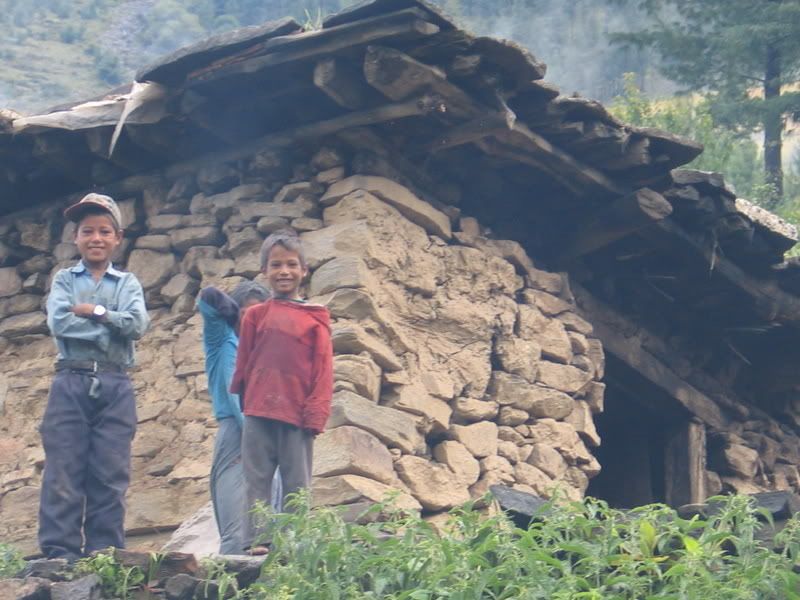 (Both photos copyright American Himalayan Foundation, used with permission)
(Both photos copyright American Himalayan Foundation, used with permission)
 type the AHF's name in the "Who do you GoodSearch for?" space, hit verify, and every time you search, AHF receives a penny. It all adds up!
type the AHF's name in the "Who do you GoodSearch for?" space, hit verify, and every time you search, AHF receives a penny. It all adds up!

“The wrongs done to trees, wrongs of every sort,
are done in the darkness of ignorance and unbelief,
for when the light comes,
the heart of the people is always right.”
~John Muir

If only I could share it:
The soft sound of snow
Falling late at night
From the trees
At this old temple.
~Hakuin (1686-1768)
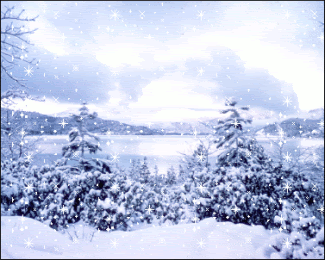
Plant trees.
They give us two of the most crucial elements for our survival:
oxygen and books.
~A. Whitney Brown

 Found this in a local health food store on Friday, and of course I had to get myself a couple for the Blogathon! It's Kombucha Wonder Drink, an organic "Himalayan Kombucha green tea with essence of lemon ~ A Sparkling Himalayan Tonic." Perfect, no? (It's good, too!)
Found this in a local health food store on Friday, and of course I had to get myself a couple for the Blogathon! It's Kombucha Wonder Drink, an organic "Himalayan Kombucha green tea with essence of lemon ~ A Sparkling Himalayan Tonic." Perfect, no? (It's good, too!)
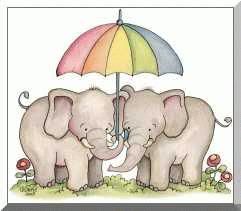 Sukla Phanta Wildlife Reserve in southwest Nepal is a precious haven for 386 species of birds, unique flora, elephant, rhino, antelopes, tiger, leopard and wild boar. Except during monsoon, the scarcity of water is a threat to all these wild creatures. For the last six years, AHF has partnered with Peter Byrne and the International Wildlife Conservation Society to rehabilitate and create ten water sources in this 200,000-acre reserve. Animals are now less restricted in their gathering places and have water year-round.
Sukla Phanta Wildlife Reserve in southwest Nepal is a precious haven for 386 species of birds, unique flora, elephant, rhino, antelopes, tiger, leopard and wild boar. Except during monsoon, the scarcity of water is a threat to all these wild creatures. For the last six years, AHF has partnered with Peter Byrne and the International Wildlife Conservation Society to rehabilitate and create ten water sources in this 200,000-acre reserve. Animals are now less restricted in their gathering places and have water year-round.Healthcare, Tibetan Style
Lingshed, Ladakh
Lingshed is a high and remote valley in Ladakh. The eight villages in Lingshed Valley have no roads, hospitals or post offices and during the winter months, the passes are closed with snow, keeping the villagers in isolation. Six years ago AHF met Geshe Ngawang Jangchup, who was looking for a way to train local amchiis (traditional Tibetan medical doctors) so health care would be available to villagers year round. AHF said yes, and offered salaries for Tibetan doctors and scholarships for students.
In these six years, the health of the villagers has improved dramatically. We continue to help - with salaries for doctors who run a local clinic and funds to train more students. We helped to build a kitchen for the clinic so the newly trained amchiis can hold health workshops and seminars. We also purchased textbooks and a machine to grind traditional medicine. Mothers have the help they need when it's time to give birth and the very young and old can get medical attention when they most need it. A little help goes a long way here.
 Just a little glimpse into my life. (Or into the life of a family of Wyoming wrens, anyway!)
Just a little glimpse into my life. (Or into the life of a family of Wyoming wrens, anyway!)
Good care for pennies
Friends of Shanta Bhawan Clinic, Kathmandu
Taking care of an average of 13,000 patients a month is no easy task, but the staff at the Shanta Bhawan Clinic in Kathmandu is good at it. Very good in fact - the Clinic received the Daxya Gold Medal in recognition of their outstanding work treating tuberculosis patients. Almost all outpatient medical needs can be met here plus: immunizations, TB care, family planning, and pre-and post-natal care for mothers and children. Last year over 16,000 infants were vaccinated - a new record!
Director Luke Sunde, world's youngest octogenarian, has dedicated his retirement to running the clinic, and to making good care affordable for the poorest Nepalis and Tibetans, often refugees, in Kathmandu. Everything is on a sliding scale and the registration fee just 14 cents. Luke has led the clinic for 25 years, mentoring and coaching his 29 person staff. Most of the staff have been at FSB for so long they know many of their patients by name (which becomes more impressive when you realize they see 156,000 patients a year!)
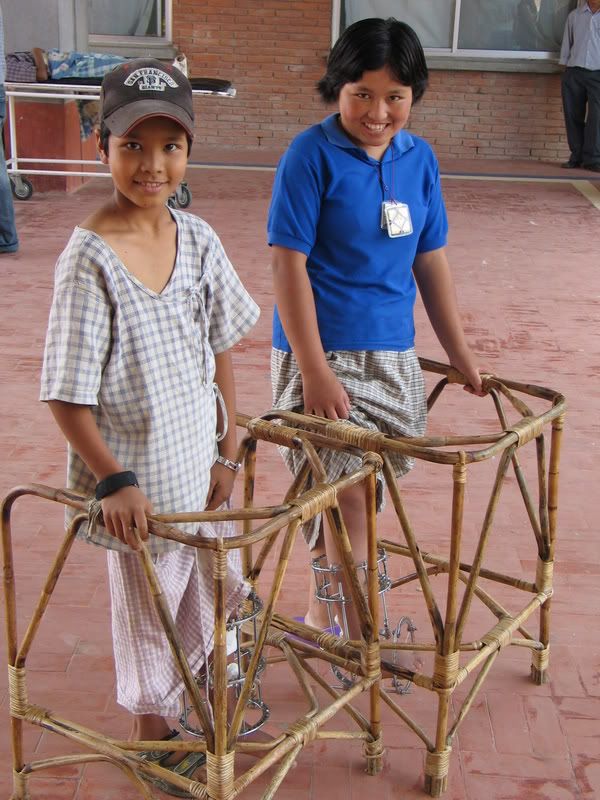
 HRCD: A Children's Orthopedic Hospital (from AHF's web site)...
HRCD: A Children's Orthopedic Hospital (from AHF's web site)...Eighteen years ago, AHF was introduced to an extraordinary doctor. He had trained in the U.S. and come back to his homeland determined to help Nepal's disabled children. Dr. Ashok Banskota's passion to heal poor children with clubfeet, TB of the spine, polio, untreated burns and infections has led him, and us, on a journey of miracles. We have supported him through two makeshift hospitals, helped him build a new, modern hospital just outside Kathmandu and now fund his surgical costs.
Dr. Banskota tells us the miracles are the children, who come from poor families who sometimes cannot afford even a bus ticket to reach the hospital. Many arrive with disfigured bodies and fearful faces. In the loving hands of the surgeons, nurses and hospital staff, the children transform. Some must have steel wires inserted into bones to stabilize or pull a limb straight. Others experience long surgeries and months of physical therapy. Their faces belie the physical pain. They beam with smiles, they throw jokes and sing songs. They tell us that love heals.
Every child who comes to the Hospital and Rehabilitation Center for Disabled Children is well cared for, and every day children leave the hospital with the ability to walk, leap and play. In the last year Dr. Banskota and his team performed over thirteen-hundred life-changing surgeries. AHF also offers scholarships to orthopedic residents who train with Dr. Banskota and who then become the backbone of his surgical team.




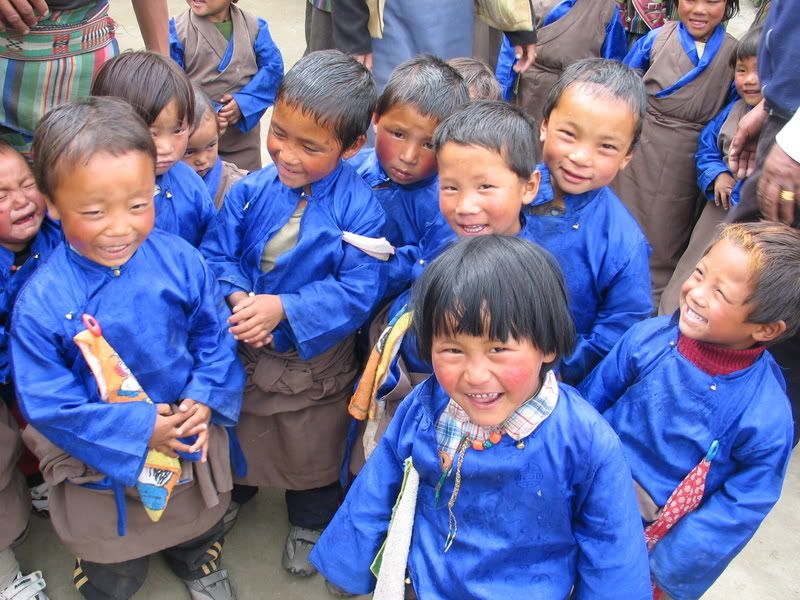 (Photo copyright American Himalayan Foundation, used with permission)
(Photo copyright American Himalayan Foundation, used with permission)
The kingdom of Lo, or Mustang, politically part of Nepal but culturally and geographically Tibetan, is home to 6,000 Lobas. Most of them trade in the winter and practice subsistence agriculture the rest of the year - which means long days in the fields. Parents have, until now, been faced with the difficult choice of taking along babies and young children with them into the fields or leaving them at home unattended - neither a safe option. In one village, four children were lost in the river in one year.(I love that they're learning the Tibetan language!)
With the AHF's help, eight villages have set up day care centers where a total of 270 children have a secure, healthy place to stay and play. They are also learning to read and count in three languages (including Tibetan, not taught in the local government school) and will proudly show off their singing and dancing abilities to their grateful parents - or to anyone who asks!

 (Photo copyright American Himalayan Foundation, used with permission)
(Photo copyright American Himalayan Foundation, used with permission) I don't know about you, but I always loved school. No, I really did! I loved to read, I loved to learn, I loved getting new books, pencils, notebooks... the first day of school was always exciting for me (and yeah, the last one was too!) :-) I think most of us in the west take education for granted. A lot of children never get the opportunity, and for too many, that lack can lead to a lot of hardship and suffering.
I don't know about you, but I always loved school. No, I really did! I loved to read, I loved to learn, I loved getting new books, pencils, notebooks... the first day of school was always exciting for me (and yeah, the last one was too!) :-) I think most of us in the west take education for granted. A lot of children never get the opportunity, and for too many, that lack can lead to a lot of hardship and suffering.



Aloo Achar (Nepal potato salad)
From IVU's "Recipes Around the World"
* 4 medium size waxy boiling potatoes
* 4 Tbs. ground roasted sesame seeds
* 3 or 4 Tbs. lemon juice (fresh squeezed)
* 1 tsp. salt
* 1 or more hot green chiles, finely minced (*)
* 4 Tbs. sesame oil
* 2 tsp. vegetable oil
* pinch ground Asafoetida (**)
* to 10 whole fenugreek seeds (**)
* 3 Tbs. cilantro (Chinese parsley) minced
(*) Use as many chiles, like jalapenos, as you can stand. If you can't tolerate hot, spicy food, 2 or 3 Tbs. green bell pepper can be substituted.
(**) Look for these in an Indian or Middle-Eastern grocery
Boil the potatoes in a big pot.
Meanwhile, combine the chiles (or green pepper), salt, lemon juice and ground roasted sesame seeds in a non-metallic bowl.
(By the way, roasted sesame seeds can be found as "iri goma" in Oriental markets.
I don't know if you can get them already ground up.)
Add the sesame oil just a little at a time and mix in with a wire whisk.
Using a metal ladle or a small butter warmer, heat the vegetable oil by holding it over heat.
When quite hot, add the asafoetida powder and fenugreek seeds.
The fenugreek seeds will start to darken in the hot oil in just a few seconds... when this happens dump it all into the bowl.
Mix well, then add the cilantro (Chinese parsley) and mix some more.
Check your seasonings.
When the potatoes are done, drain and peel while hot (holding with a fork if you need to.) The peel should slide right off.
Cut into 3/4" dice and add to the bowl of dressing.
Gently mix to coat all the cubes and finally adjust your seasonings if needed.
Let cool, cover and refrigerate. You can eat this after a couple of hours, either cold or room temperature. However, it's supposed to be much better the next day.
Keeps for up to 4 days refrigerated.
Inspired by Madhur Jaffrey's World of the East Vegetarian Cooking
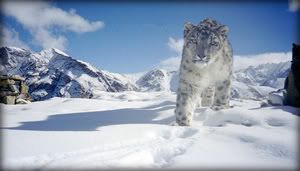 (Photo copyright American Himalayan Foundation, used with permission)
(Photo copyright American Himalayan Foundation, used with permission) A photo of a Tiger sleeping peacefully. For years AHF has supported anti-poaching efforts to preserve this threatened species. Fortunately, the only thing shooting this tiger is a camera!
A photo of a Tiger sleeping peacefully. For years AHF has supported anti-poaching efforts to preserve this threatened species. Fortunately, the only thing shooting this tiger is a camera!A Message from the Chairman
Dear Friends,
AHF takes care of 15,000 people every year throughout the Himalayas: poor children, young girls at risk, Tibetan elders, refugees. These are vulnerable people; they do really need help and, in most cases, have nowhere else to turn.
We're involved in more than 120 projects now, and all of them produce the kind of tangible results that really help people in the Himalayas. Children are healed; elders have shelter and a community; schools are built and refugees find hope in a new land.
As part of the AHF family, you make it possible; your compassion and generosity have answered many prayers. Please join with us to continue the work that so many Himalayan people rely on.
Thank you from all of us.
Best personal regards,
Richard C. Blum

Himalayan ecology is as fragile as it is dramatically beautiful. And it is under intense pressure. The AHF combats environmental degradation by planting trees (almost 2 million so far), supporting sustainable agriculture, and building new water systems - for both people and imperiled animals.Two such imperiled animals the AHF works to save are the tiger and the snow leopard, and I'll be posting about them in more detail in the many half-hours to come! :-) But for now, won't you please visit Care 2's Race for the Big Cats and click on either the Tiger or Snow Leopard? One click a day, every day, adds up to a big difference for these beautiful, majestic, irreplaceable animals! Thank you!

